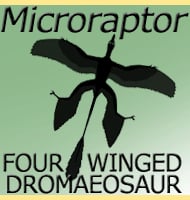In Depth
Sometimes when people hear the name Antarctosaurus they assume that this dinosaur lived in Antarctica where in actuality it lived in Argentina. Antarctosaurus means ‘southern lizard’ and here it is a reference to being found on a southern continent. However the real problem with Antarctosaurus is that it is known from very incomplete remains, not all of which may actually be attributable to the genus.
Today only the type species A. wichmannianus is considered valid by everyone, however A. giganteus, also from Argentina, might represent a second although possibly much more massive species. The problem here is that A. giganteus is known from very incomplete remains that are not easy to compare with the type species, so many regard it as a nomen dubium. A. brasiliensis from Brazil is also considered a nomen dubium because it is only known two limb bones and a partial vertebra. One former species from India called A. septentrionalis has now been separated and named as its own genus Jainosaurus. Another species, this time from Kazakhstan called A. jaxartensis is also considered unlikely to be part of the genus. Aside from difference and being unable to compare more remains of all species, the main argument against including the Indian and Kazakhstani material with the South American fossil is that South America is thought to have been isolated from the other continents of the world during the late Cretaceous.
The scant remains and confusion regarding just what is and is not attributable to the genus make it’s hard to establish an accurate figure for the size of Antarctosaurus. Study of the type species has indicated a size of up to eighteen metres long; however without knowing the full body shape and proportions for certain, this figure is really only a best guess. If the material for A. giganteus is valid them an upper size approaching thirty meters may be more appropriate, at least for this species of the genus. This would also make Antarctosaurus a size rival for Argentinosaurus, but again, with the validity of the inclusion of these fossils with the Antarctosaurus genus in doubt, it is impossible to reliably attribute this size with this dinosaur.
Further Reading
– Short review of the present knowledge of the Sauropoda. Memoirs of the Queensland Museum 9(1):121-126. – F. von Huene – 1927.









